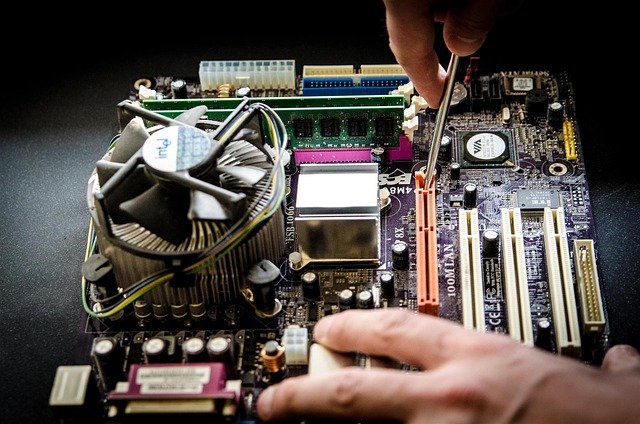When to Repair, Replace, or Upgrade Your Device
Deciding whether to repair, replace, or upgrade a computer or electronic device involves balancing performance needs, repair cost, and future compatibility. This article outlines practical indicators to choose the right path, explains how components like motherboard, CPU, GPU, and storage factor into the decision, and highlights routine maintenance that extends device life.

Deciding whether to repair, replace, or upgrade a device can feel overwhelming, especially when performance, budget, and future-proofing are all on the table. Start by defining what the device needs to do for you now versus what you might need it to do in two to five years. Consider performance symptoms, how repair costs compare to replacement, and whether component-level upgrades (storage, RAM, cooling, GPU) can provide a cost-effective path to meet your goals. This guide breaks common problems down by component and offers practical troubleshooting and maintenance tips to help you make a reasoned choice.
When should you repair or replace hardware?
The decision to repair or replace hardware depends on age, failure mode, and total cost of ownership. For devices under three years old, repairs often make sense if they restore full function without recurring issues. For devices older than five years, replacement usually offers better value because newer components bring efficiency and compatibility improvements. If multiple subsystems fail (power, storage, motherboard), replacement is typically more economical than piecemeal repairs. Also factor in software support: if the operating system no longer receives security updates for your hardware, replacement becomes a stronger option.
Is the motherboard or CPU worth repairing or replacing?
Motherboards and CPUs are central to system compatibility. A CPU failure on a modern socketed platform may be repaired only by replacing the chip; replacement cost relative to a full new system matters. Replacing a motherboard often requires matching RAM and CPU compatibility, which can cascade into other upgrades. If only the motherboard fails on an otherwise recent machine, replacing it may be viable. If the CPU is a clear bottleneck for tasks you regularly perform (video editing, simulations), upgrading to a newer platform can offer large performance gains but usually at higher cost than component-level fixes.
Should you upgrade the GPU or keep the current one?
GPU upgrades deliver the largest performance boost for gaming, 3D work, and some AI workloads, but they are often the most expensive single component. If your current GPU meets the performance you need and only fails occasionally due to driver or thermal issues, repair and maintenance (cleaning, thermal repaste, driver updates) can prolong its life. If you need a step change—significant frame-rate increases, hardware acceleration for new software, or VR support—an upgrade is appropriate. Consider power supply capacity and case size before buying a larger GPU.
Storage: SSD, HDD, and capacity considerations
Upgrading storage from HDD to SSD yields immediate responsiveness improvements for booting and application load times and is often one of the most cost-effective upgrades. If your device struggles with slow boot times or laggy apps, migrating to an SSD (and reinstalling the OS or cloning drives) can feel like a new machine. For archival and large-media storage, HDDs remain cost-efficient. Evaluate capacity needs, interface compatibility (SATA vs NVMe), and whether your laptop/desktop supports additional drives before deciding between repair, replacement, or upgrade.
Real-world cost and pricing insights matter when you compare repair vs replacement. Repair shops may charge labor plus parts; OEM repairs can be more expensive than third-party services. Component upgrades have wide price ranges depending on brand, performance tier, and market factors. Below is a concise comparison of common replacement parts and their typical cost ranges to help frame decisions.
| Product/Service | Provider | Cost Estimation |
|---|---|---|
| 500GB SATA SSD (consumer) | Samsung 870 EVO | $40–$70 |
| 1TB HDD (desktop) | Western Digital Blue | $30–$50 |
| Mid-range GPU | NVIDIA GeForce RTX 3060 | $200–$400 |
| Mid-range CPU | Intel Core i5 (10th gen) | $100–$200 |
| Air CPU cooler (quality) | Noctua / be quiet! | $30–$70 |
Prices, rates, or cost estimates mentioned in this article are based on the latest available information but may change over time. Independent research is advised before making financial decisions.
How do cooling, firmware, and maintenance affect decisions?
Regular maintenance—cleaning dust from fans and heat sinks, replacing thermal paste, and updating firmware/drivers—can prevent many failures and improve performance stability. Poor cooling shortens component life and causes throttling that mimics hardware degradation; resolving thermal issues may be cheaper than replacing a CPU or GPU. Firmware and BIOS updates can restore compatibility and fix bugs; always follow trusted sources and back up data before updating. Maintenance is often the lowest-cost, highest-return action to postpone replacement.
Assessing compatibility, peripherals, and troubleshooting
Before upgrading or replacing, check compatibility: socket types, RAM generation, power supply wattage, and case dimensions. Peripheral support (USB standards, display outputs) also matters if you rely on specific devices. For troubleshooting, start with simple steps: backup data, run diagnostics on storage and memory, test with known-good power supplies, and use live OS tools to isolate software vs hardware problems. Keep a log of symptoms and tests to help technicians diagnose issues quickly if you choose repair.
Deciding whether to repair, replace, or upgrade ultimately depends on your performance needs, budget, and how long you intend to keep the device. Repairs and maintenance can extend life and minimize waste, while targeted upgrades like SSDs or additional RAM offer high value for moderate cost. Full replacement makes sense when multiple key components fail, compatibility limits future upgrades, or when newer hardware delivers substantial efficiency or capability gains. Weigh the technical factors, cost estimates, and personal needs to reach a practical choice.





